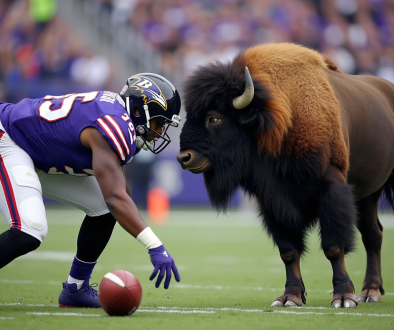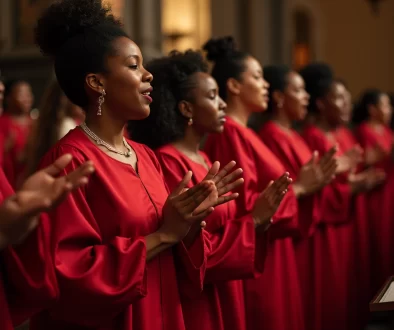Doyle and Houdini: A Strange Friendship
A few months ago, I was listening to an audiobook of the entire compendium of Sherlock Holmes stories, as narrated by Stephen Fry. The stories themselves are, I find, a bit dryer than I was expecting, considering all the media that has featured the detective since, but Fry’s narration does wonders for the text. I found myself pulled in and enthralled by the cunning exploits of Watson and Holmes.
Something that stood out to me, however, was not part of a Sherlock Holmes story itself, but in Fry’s preface to The Hound Of Baskervilles. Fry spends some time discussing Sir Arthur Conan Doyle’s relationship with famous magician Harry Houdini, and their strange – and strained – friendship. You see, despite Doyle’s famous detective, who believed that everything on God’s green earth could be explained by logic and reason, Doyle himself believed in the occult.
Now, I’m not just saying that he believed that life after death was possible. No, he belonged to something called the “Ghost Club”, a paranormal investigation society. He was vehement in his belief that the occult, and spiritualism, were real and tangible forces that could be interacted with. He and his buddies would meet up at the club and talk about life after death, communicating with spirits, and yes, ghosts. In other words, if Sir Arthur Conan Doyle showed up on an episode of the X-Files, well, let’s just say that Mulder would find him very interesting.
Harry Houdini, on the other hand, was known for his outstanding and forthright denial of spiritualism. He famously went from seance to seance, debunking spiritualists and explaining their trickery. Some claimed that Houdini’s act was a result of magic, which he fervently denied, despite the added fame and money that extra crowds would surely have brought him.
So, we’ve got Houdini, a magician who denies magic, and Doyle, the creator of Sherlock Holmes, who denies reason… Quite an interesting duo.
Doyle and Houdini met in 1920. Despite all evidence to the contrary, Doyle seemed to believe that Houdini’s powers were truly from an otherworldly source. In fact, he rejected Houdini’s own explanation of his tricks and escapes, choosing to believe that Houdini was lying to him, and that Houdini’s magic was, truly, magic.
Despite this, they maintained a friendship for a few years, and seemed to be in each other’s good humor. Though Houdini insisted that he’d never seen a spiritualist that wasn’t a fraud, Doyle countered that Houdini simply hadn’t met a real spiritualist yet. In fact, Doyle’s wife considered herself to be able to speak with the dead, and Doyle, with the utmost confidence in his wife’s skill, invited Houdini to come and see for himself.
Houdini, a few years prior, Houdini had lost his mother to a stroke. He missed her sorely, and just this once, decided to suspend his disbelief. In the spirit of friendship, he met up with Doyle and his wife to conduct a seance.
The problem was, he could tell very quickly that it was all a fake.
Honestly, I’m not sure what Doyle thought he would gain by bringing the world’s foremost occult debunker to inspect the work of his own wife. He surely must have felt that his wife was the real deal, that she could indeed speak to the dead. God only knows what was going through his wife’s mind as she was performing her seance. Maybe Doyle put her up to it, and due to his utmost confidence in her, she felt she couldn’t refuse. However, the rat had just invited the mother of all cats into its lair.
Houdini apparently left the seance saying very little, likely trying not to upset Doyle’s feelings. However, several months later, Houdini reaffirmed in a newspaper interview that he had met no medium capable of performing truly otherworldly acts. Doyle saw this as an insult, and sent Houdini a very angry letter in response. Though Houdini tried to work things out, their friendship would never fully recover.
When Houdini wrote a tell-all about the tricks of spiritualists and mediums, Doyle publicly lambasted him as a liar. The final death knell in the friendship, however, was when Houdini debunked one of Doyle’s favorite mediums, causing Doyle to cease all responses to Houdini’s letters.
Their friendship was dead, and no medium was going to be able to bring it back to life.
Houdini died an early death a few years later due to a ruptured appendix and, despite all of Houdini’s best efforts, Doyle continued to believe that Houdini’s tricks were truly magic. Doyle continued to be an outspoken proponent of spiritualism until his death in 1930. Doyle’s wife stopped her seances ten years later, when she herself became disillusioned with her own practices.
The two men were about as opposite one another as any two men could ever hope to be. Doyle believed in magic while writing about logic, and Houdini believed in logic while performing magic. They were each other’s yin and yang, so is it any wonder that they eventually met and struck up an accord with one another?
Their friendship lasted only a few short years, and ended bitterly, but stands to this day as a testament to the bizarre duality of man.
Powered by WPeMatico



